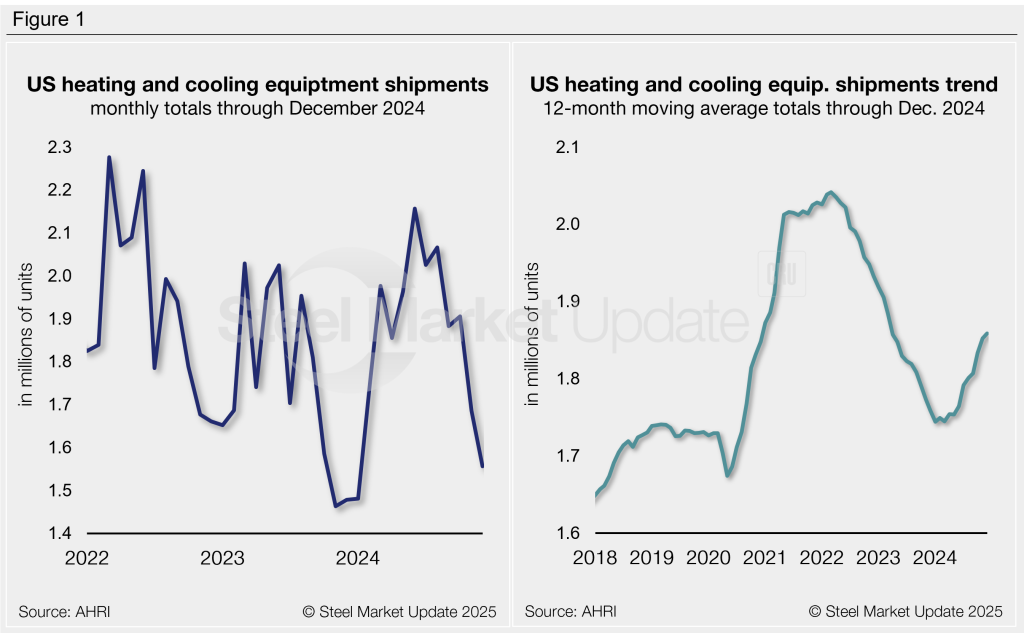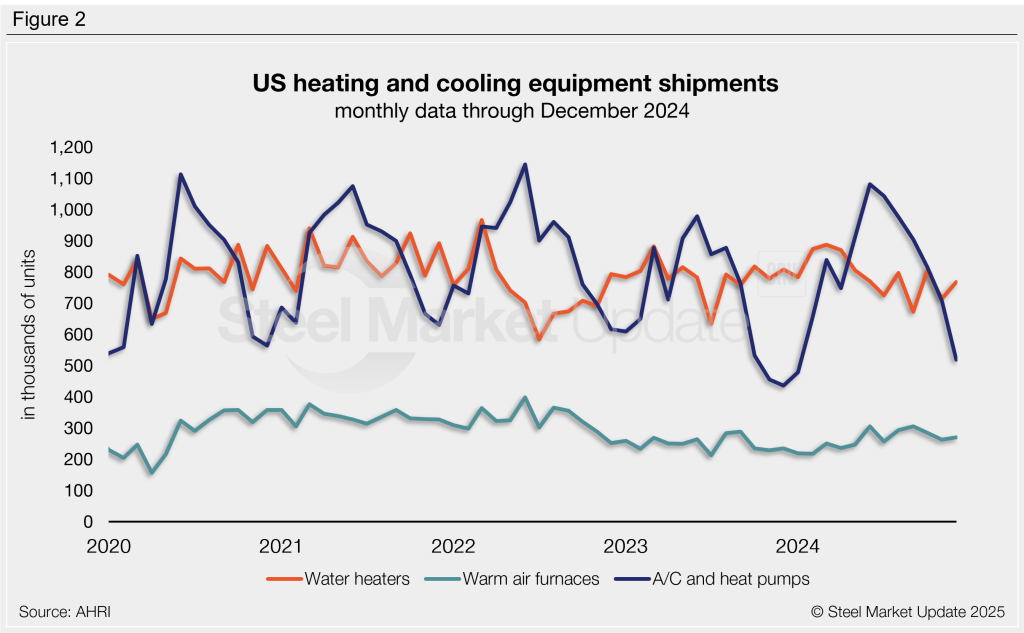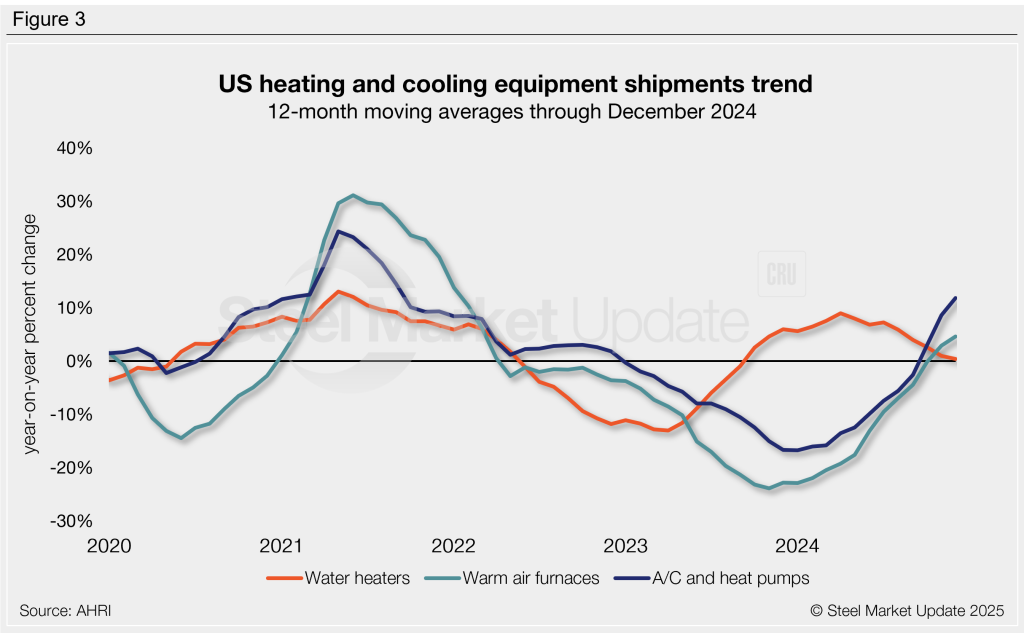Analysis
February 14, 2025
HVAC equipment shipments slow in December but strong annually
Written by Brett Linton
Shipments of heating and cooling equipment in the US fell to an 11-month low in December, according to the latest data released by the Air-Conditioning, Heating, and Refrigeration Institute (AHRI). This marked the fourth-lowest monthly shipment rate of the last four and a half years.
December shipments declined for a second month, falling 8% month over month (m/m) to 1.56 million units (Figure 1, left). This follows typical seasonal slowdowns as air conditioner and heat pump shipments decrease in the winter months.
While lower m/m, shipments were 5% higher than a year earlier, marking December as the seventh consecutive month with positive annual growth.
Trends
To smooth out seasonal fluctuations, monthly shipment data can be recalculated on a 12-month moving average (12MMA) basis to better highlight trends. On this annualized basis, total shipments experienced a post-Covid surge that peaked early in 2022 and then trended lower through 2023. Shipments began to recover in early 2024 and continued to do so through December; the latest 12MMA has climbed to a 21-month high of 1.86 million units (Figure 1, right).

Shipments by product
- Water heater shipments rose 7% m/m in December to 767,000 units, 5% below levels seen one year prior. Compare this to the two-year high of 887,000 units recorded nine months prior.
- Shipments of warm air furnaces rose 2% m/m in December to 270,000 units. Compared to the same month last year, December shipments were 15% higher this year.
- Air conditioners and heat pump shipments declined in December for the sixth month in a row, falling 27% m/m to 519,000 units. Still, shipments were 19% higher than the same month last year. Note that air conditioner/heat pump shipments are very seasonal, as evident in Figure 2.

All products see annual growth
Figure 3 shows the annual growth rate of shipments by product on a 12MMA basis. For all three product categories, the average monthly shipment rate in 2024 exceeded those of 2023.
- Air conditioners and heat pumps experienced the most significant shipment growth, rising 12% from the previous year to one of the strongest annual growth rates since 2021.
- Warm air furnace shipments grew 5% year over year (y/y) and were also at a multi-year high.
- Water heater shipments saw a modest increase of less than 1% annually. This rate has been steadily declining over the past eight months.

The full press release of this data is available here on the AHRI website.
An interactive history of heating and cooling equipment shipment data is available here on our website. If you need assistance logging in to or navigating the website, please contact us at info@steelmarketupdate.com.







